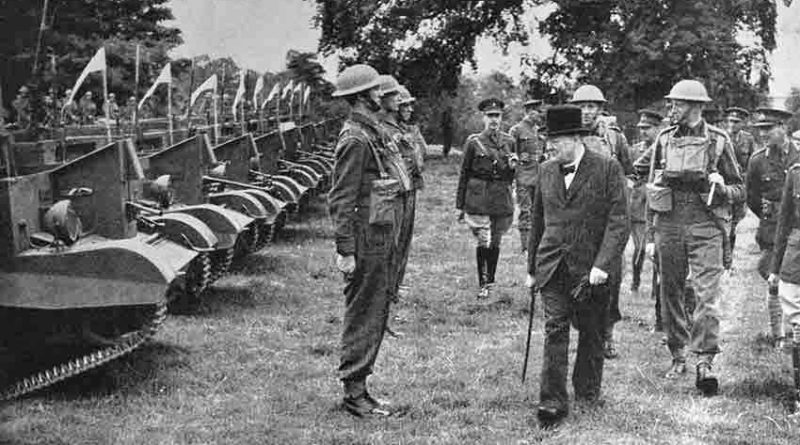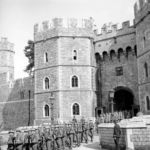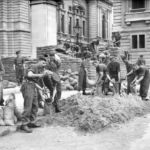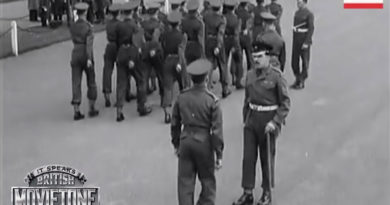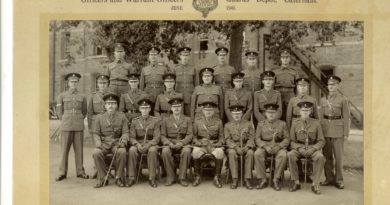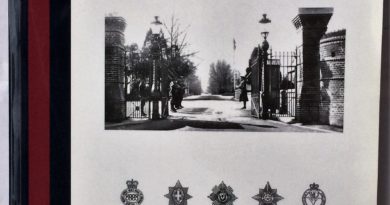Training for the Grenadier Guards, Caterham Guards Depot, 1940
Across the country tens of thousands of men were adjusting to military life, many volunteering but most following conscription.
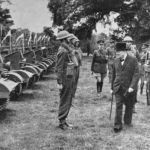
David Fraser, later to become General Sir David Fraser, had enlisted at the earliest opportunity but had to wait some time before he could join his chosen regiment, the Grenadier Guards, which his father had served in. In October 1940, not yet even an officer, he describes his experiences at the Guards Depot at Caterham, where recruits for the Guards Regiments received their training separately from the rest of the Army. He was part of a distinct squad who would all later go to on to Sandhurst for officer training. But initially they got no special treatment:
It was a tonic, and a much needed tonic because now, at last, I was part of an organization with really high standards, really strict discipline and really good morale.
From the moment a recruit arrived at the Caterham barrack gate and was marched off by a picquet sentry to join his squad, feet moving so fast that he seemed to be flying, there was not a moment to relax: through the first haircut (a shaven head) to the first and subsequent drill parades; through the sound of reveille blown by bugle at six o’clock, with all recruits tumbled out and standing at attention by beds one minute later; through the occasions when it was decided (on principle) that we had been ‘idle’ and needed sharpening up – HALT! Stand at ease! ‘GAS’! (old-style respirators on – most uncomfortable from a respiratory point of view) – Squad shun! Squad will fix bayonets – FIX! (this was the old, long sword- bayonet, with a tricky fitment to the rifle for the inexperienced or maladroit) – BAYONETS! Slope Arms! Quick March! Left – right – (what seemed thirty miles an hour) – Break into double time, Double MARCH! Mark TIME! Lift Knees, Up, Up, Up!
Through the shining parades, when we sat astride our beds in the evening, a tin of boot polish and duster in hand, and answered questions on Regimental history, Regimental personalities and so on – the progress of shine on boots was a matter of unceasing anxiety. ‘Those boots are below standard! Unless you get a move on them you’ll find yourself back-squadded, lad!’ Official shining parade only lasted an hour but we kept at it until lights out.
And it was in the unofficial parts of it that we could wander a little, laugh, gossip, make friends. Smoke.
Although if a matchstick fell to the floor at the wrong moment – March down the barrackroom. Stamp to attention. ‘Leave to fall out, Trained Soldier.’ A nod. A turn to the right, a march back, a retrieved match stick, its disposal, another march down the barrackroom. ‘Leave to fall in, Trained Soldier.’ Another nod.
The bugle for Lights out. Sleep on three wooden trestles placed on two wooden stretchers and surmounted by three ‘Biscuits’, square mattress-like objects. Two blankets. Through all these experiences the impression was indelible. We were in a bit of the Army quite unlike any other. And it worked.NOTE: This article was ‘sourced’ from the internet at the link below to create content for the sites opening. The link for the original article is below.
http://ww2today.com/13th-october-1940-training-for-the-grenadier-guards


